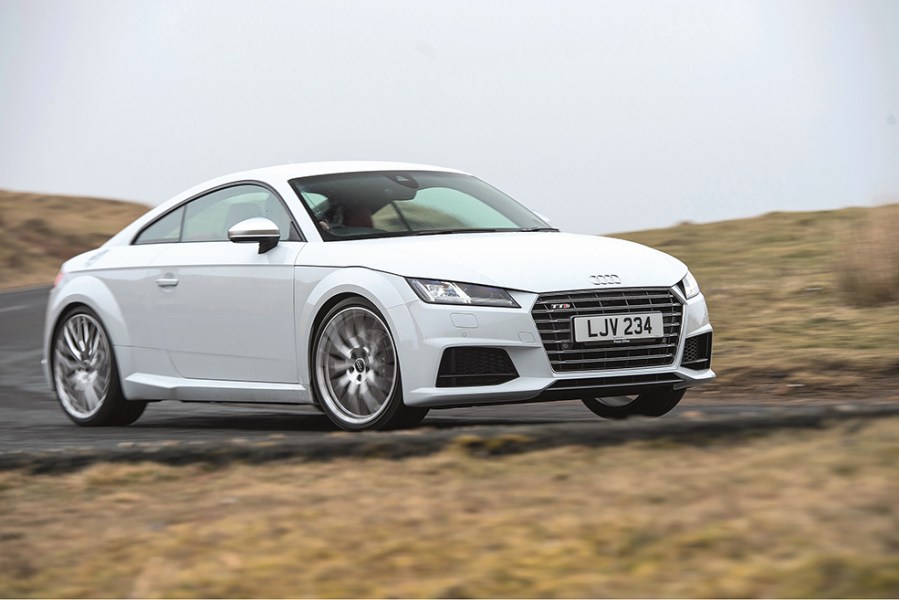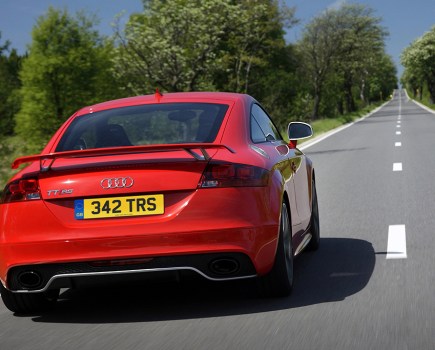With the earliest examples now 10 years old, we take a look at the nearly-new Audi TT Mk3, and why it represents a smart used car buy today.
Let’s start with the most obvious piece of buying advice. Buy the best car you can afford, but also buy the right car for you. What do we mean by that? Put simply, the Mk3 TT had an endless supply of options that adjust the characteristics. They’re small, but can add up to quite substantial differences. For example, you could get 20” wheels, or the smaller 18s or 19s. Back in 2015, when the Audi TTS Mk3 was brand new, press cars optioned on the 20s had a harsher ride. But they looked better. So, there’s a trade-off between comfort and style.
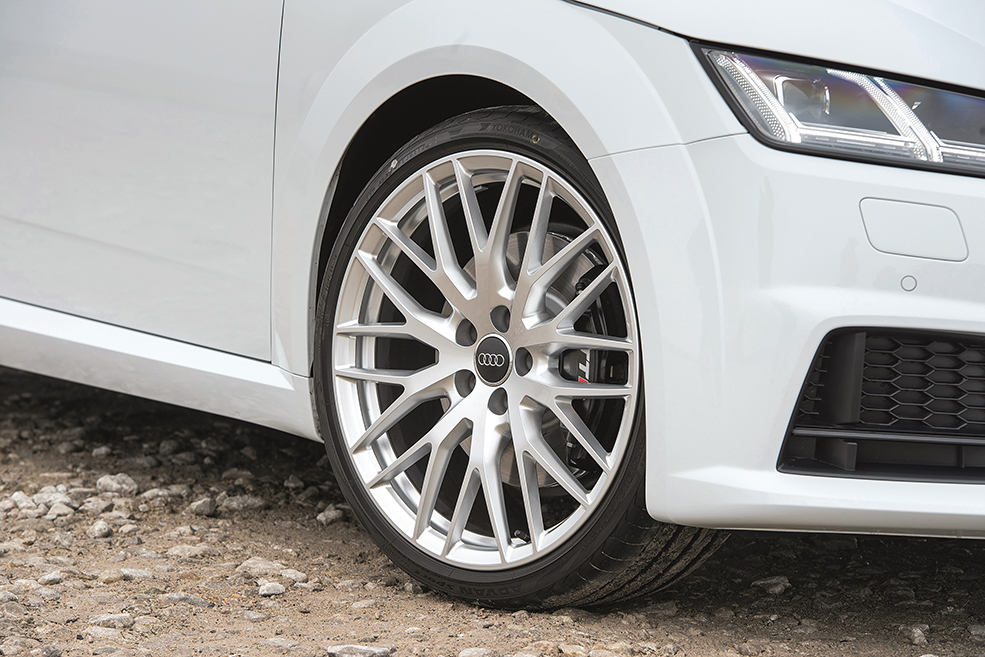
If you’re picking a diesel TT for motorway miles, chances are you want that extra bit of comfort from the 18s. Vice versa, if it’s short distances and you aren’t all that fussed with the extra comfort, the 19s or 20s are the option for you. Note here, the TT looks menacing on 20s and starts to really add that baby-R8 vibe. Especially when you throw some tuning into the mix.
Other options affect the cars personality too; do you want S Tronic, or back-to-basics three pedals and a gear lever? Do you want Magnetic Damping or regular sports suspension? These are things that should be crossing your mind from the offset. But the only way for you to know which is better for you is to simply go out and drive them. Used prices for cars that are nearly new are greatly affected by options. If you can do away with the fanciest Bang and Olufsen sound system or the Magnetic Damping, then do so. It might just save you a few thousand pounds.
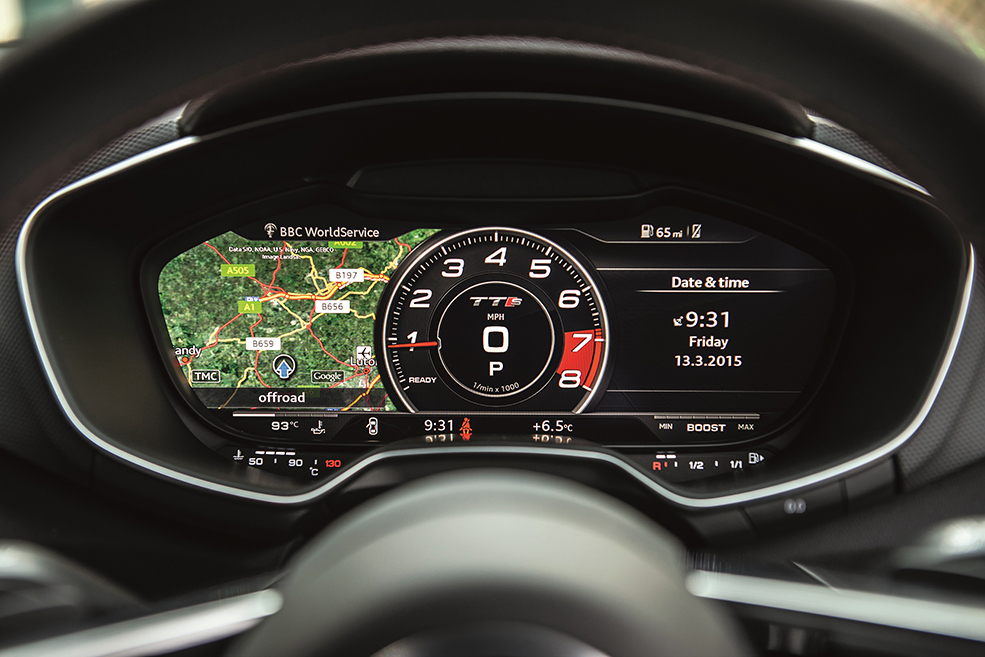
Adverts expressing virtual cockpit here and there are trying to entice you in as it became standardised on the Audi TT Mk3 so will be on every car. The clean design did away with a centre console screen for a simpler, more refreshing cabin. The 12.3inch LCD screen displays all information. This can be a little daunting at first, especially if you aren’t fussed about gadgets. But, once you’ve messed about with it for a few minutes, it’s easy to understand. You’ll be flicking through menus on the move without trouble.
Don’t buy an Audi TT if you want people to sit in the back because they’re useless for adults. Even Audi admitted they’re only really suitable for persons under 1.48m, so children… Then again, it has ISOfix points, so you can get the baby seat in if you so wish. Good luck with that if your little bundle of joy is in a wriggly mood.
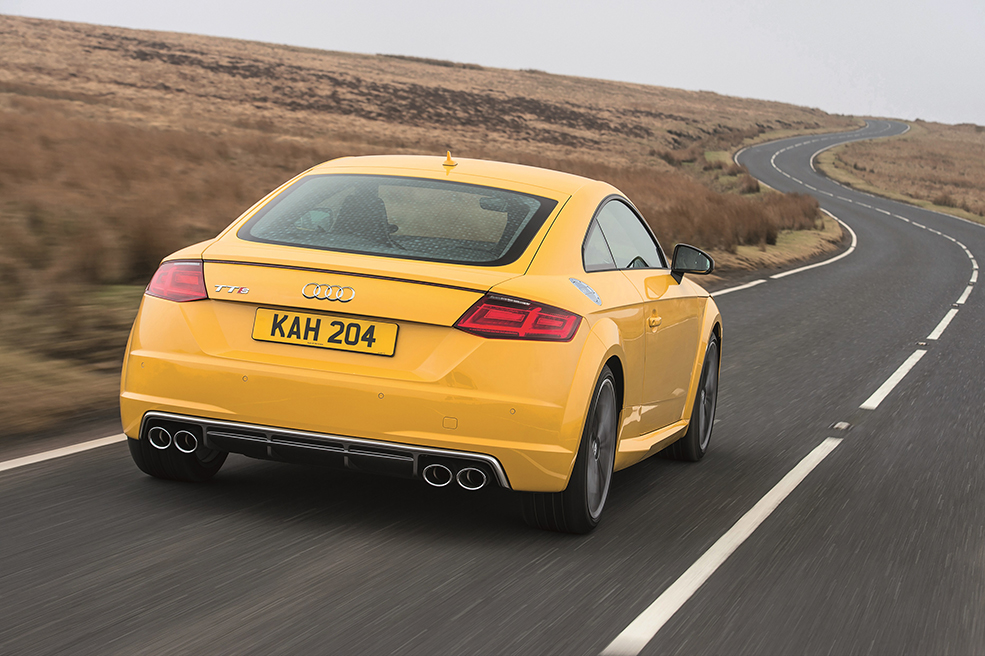
Audi TT Mk3 common problems
The Audi TT Mk3 is a reliable car, but some owners have reported a few minor problems. First up, the brakes. The actual braking mechanism is faultless, however, owners reported squeaking noises that could be rectified with replacement pads. In truth, large brakes can squeak when cold anyway, so don’t worry too much to begin with. If the problem persists and it becomes annoying, your pads should be the first port of call.
Next up, the interior. Owners reported bolsters becoming damaged easily. Sadly, this wouldn’t come under warranty because it’s a wear and tear issue. Just beware of cars with worn bolsters. Other owners have reported that the virtual cockpit can be slow to start on occasion. This is most likely a software problem, but it’s updated under warranty. Visit your local dealership if the car is under three years old.
Owners have also reported that front wishbones and anti-roll bars may need replacing at 60,000 miles. Most cars won’t have hit that mark yet, but if you’re after a cheap bargain, check out some high-mileage cars. If there are rattles from the front or rear, get them investigated ASAP or simply walk away from the purchase.
WhatCar? published a reliability survey on the Audi TT Mk3 and it scored a respectable 90%. That being said, it finished third from bottom in its class, so take from that what you will. Most problems that owners reported were non-engine related and fixed within a short period of time.
Trim levels
Before you buy an Audi TT Mk3, you need to know what packs were available from factory. First up, trim levels. You had a choice of four from factory for the regular cars; Sport, S-Line, Black Edition or Vorsprung. The Sport model is actually the base model. It comes with 18” wheels, Xenon headlights with LED DRLs, the virtual cockpit, cruise control and retractable rear spoiler.
S-Line gets all of the Sport options as well as 19” forged wheels. It also features LED headlights and rear lights with dynamic rear indicators. S-Line exterior styling pack and Front Super Sports seats in Black Alcantara/leather upholstery.
Black Edition got 20” gloss black forged 10 Y-Spoke alloys. It also got a fixed rear spoiler and black styling pack. This added privacy glass and all options from the S-Line.
The Vorsprung is the top of the line. It got 5-spoke 20” forged wheels, Matrix LED headlights, driver assistance systems including Audi Side Assist and Park Assist. It also features a Bang & Olufsen sound system.
Above this you have the TTS and TT RS. The TTS was available as a regular model or as the Black Edition.
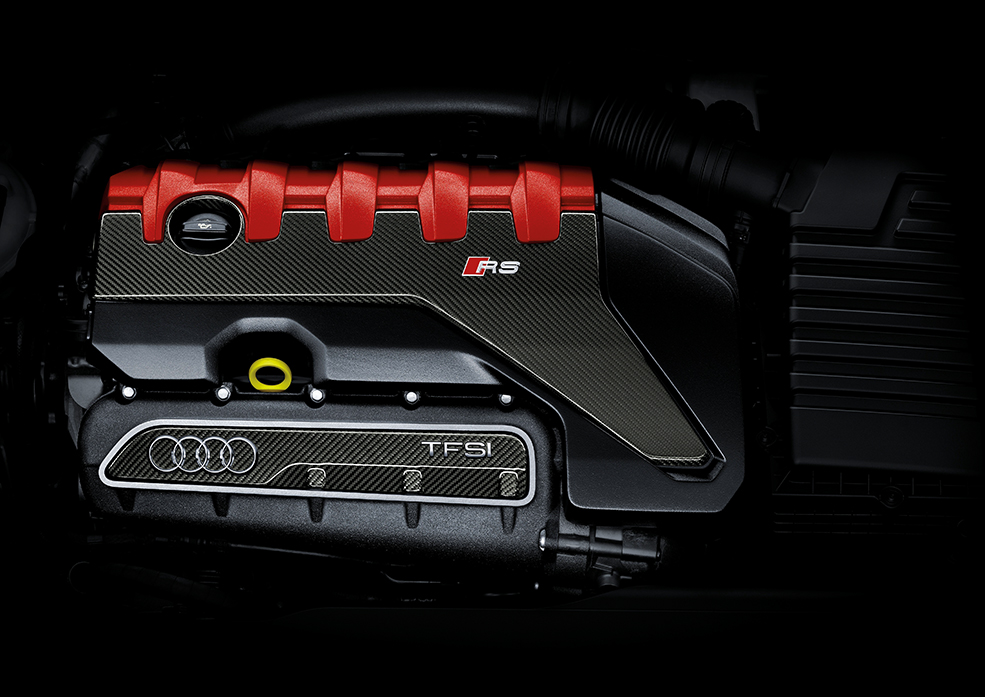
Engine choices
Once you’ve chosen your trim level you need to select which engine. Like previous generation TTs, there’s a number of engine options on offer covering both petrol and diesel. At the bottom of the tree is the 1.8-turbo, which is front-wheel drive and offers almost 200bhp of performance. At the top of the tree is the near-400bhp TT RS (review here) with that fabulous five-pot motor.
Sport models were available with a 1.8-litre turbo producing 177bhp. There are also a range of four 2.0-litre TFSI petrol engines ranging from 194bhp to 241bhp. As well as these you can have a 2.0-litre TDI engine producing 181bhp.
More powerful 2.0-litre petrols can be had with quattro or front-wheel drive, but the lesser powered cars made do with just FWD. The 2.0-litre TDI could also be had with the choice of quattro or FWD. Gearbox options were an S-Tronic auto or manual, but most cars will be S-Tronic.
The most powerful 2.0-litre TFSI engine came in the TTS. This shared most of its running gear with the Mk7 Golf R. As a result, you get a whopping 301bhp. Opt for the auto and you’ll do 0-60mph in just 4.4 seconds, but the manual takes 4.7 seconds, depending on how quickly you can slot home the gears. Later TTS cars got an extra helping hand with power up to 305bhp.
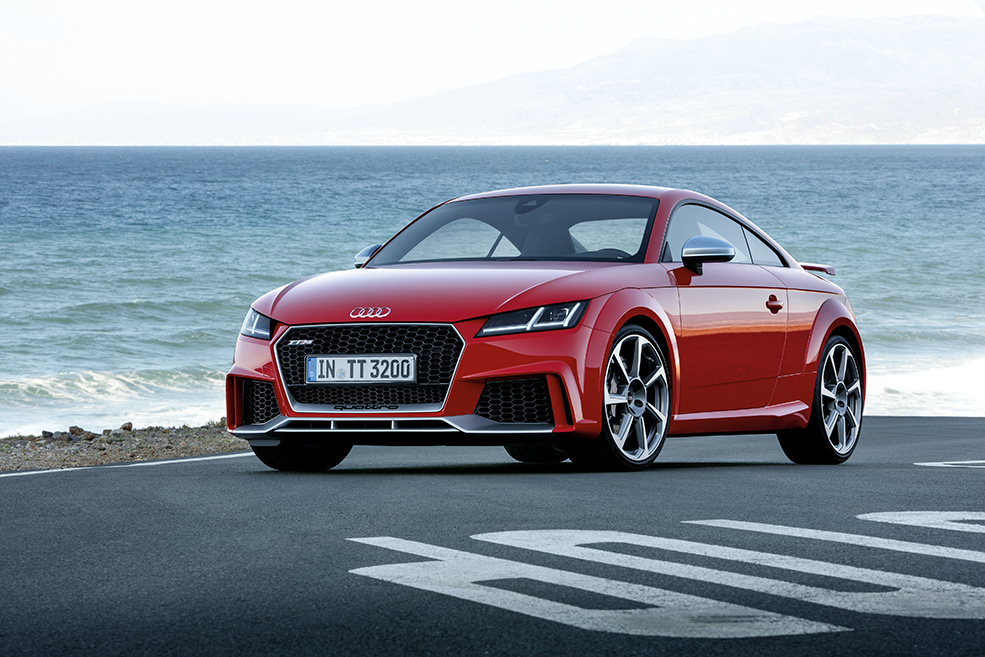
The Audi TT RS Mk3, as mentioned above, got the fabled 2.5-litre five-pot turbo producing 394bhp. 0-60mph was over in just 3.6 seconds, thanks to quattro and that brilliant S-Tronic DSG gearbox.
Special Editions
There are a few special editions to mention, all of which got an engine that was already on offer. For example, the TT 20 Years marked quite obviously 20 years of the TT. This got the 2.0-litre TFSI engine found in its most powerful trim below the TTS at 241bhp. This car was auto and quattro only. You also have the Audi Sport Edition TT, which was essentially a TT RS dressed up slightly differently.
There aren’t any commonly reported problems with any of the engines, but they aren’t bulletproof. The same checks apply to all used cars, and that’s history. Crucial with modern cars is the run-in service, particularly on the more powerful models. Speak with the previous owner if he or she was the first to own the car. To put it bluntly, cars that adhered to the gentle driving for the first 1000 miles varying speeds, braking and length of driving will more likely be more reliable. Cars that were ragged from the off will break quicker. The manual said to avoid full throttle and 2/3 of maximum engine permitted speed up to 1200 miles.
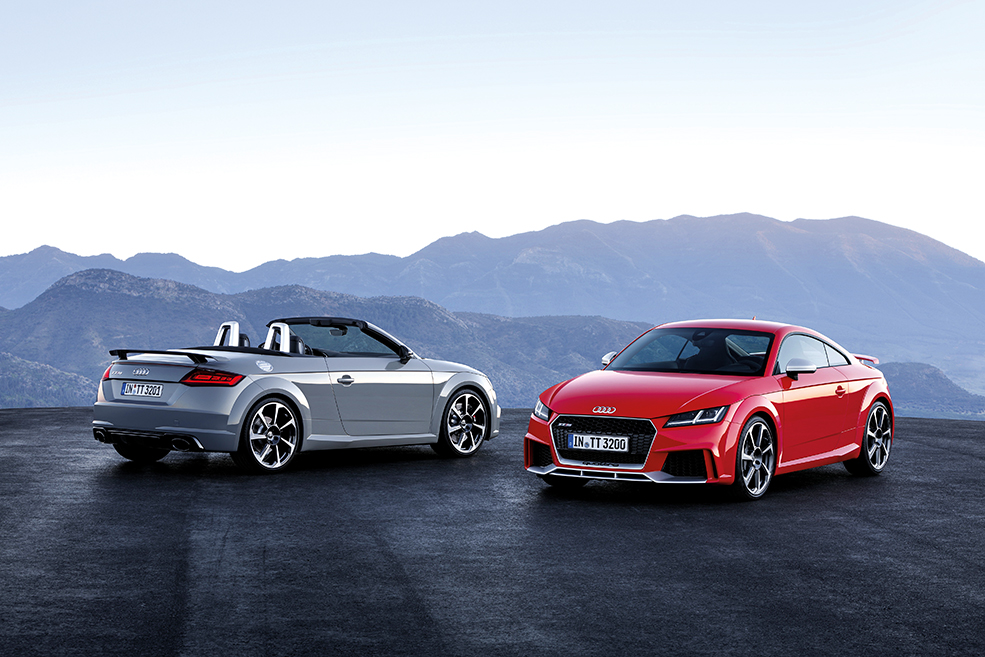
Audi TTS Mk3 Top 5 Modifications
It’s fairly new, but that doesn’t mean the aftermarket list is short. We’ll focus on modifying an Audi TTS Mk3. It’s the middle ground between performance and comfort, but most of these parts can be applied to other models. All of the cars are turbocharged, so chipping them for extra power is a doddle. Likewise with the S Tronic gearboxes, the changes can be made sharper and limits adjusted.
ECU
The EA888 engine is the one used in both the Mk7 Golf and Mk3 TTS. Cars on stock engines can reach 450-500bhp without too much trouble, but you’ll need plenty of hardware to support that. The internals won’t be too unhappy with 450bhp going through it. A simple stage 1 tune with no hardware upgrades should see 350-370bhp without a sweat. Add in a downpipe, exhaust, and intake and you’ll see the 400bhp mark from the likes of APR, MRC or Revo.
Exhaust
The stock system sounds smart, but the aftermarket adds in a more aggressive tone and you’ll get those common DSG “farts” too. Hit up Milltek, who offer a complete turbo back system with either sports cat, decat, resonated or non-resonated, all of which produce differing tones. You’re going to need around £2k+ for a full turbo-back system, but you’ll be able to get closer to the magic 400bhp with one.
Wheels
When it comes to wheels, the TT could be had with 18, 19 or 20” wheels, meaning you could go for any setup to suit, whether you want an 18 with larger sidewall or a slick 20” low-profile tyre, the choice is yours. A popular choice is the Rotiform LAS-R wheel in 20” size. It’s a smart show wheel and won’t break the budget either at just over £1000 for a set.
Suspension
We can sharpen up the handling here substantially if you intend to use the car on track. Bilstein coilovers are a great option as the range extends from road use to full on track spec with the B16 Clubsport range at almost £3500. KW also balance track and road use well and can even be applied to cars with electronic damping, just make sure you opt for the right kit. Realistically, you’re going to need £1500 for a set, but you won’t be disappointed with the drop or the performance.
Audio
If you’ve chosen a car that’s not been blessed with the Bang & Olufsen sound system, fear not, the aftermarket can help you. Whether that’s Kenwood, Alpine or anyone else on the market, they will be able to fit a factory-fresh look with ridiculous audio quality. This is all down to choice, so you’ll need to do the digging on this one.
Tech Spec: Audi TT Mk3
| 1.8T FSI | 2.0TDI | 2.0T FSI Quattro S-Tronic | TTS | TTRS | |
| Engine: | 1798cc | 1968cc | 1984cc | 1984cc | 2480cc |
| Max power: | 177 bhp | 181 bhp | 241 bhp | 301 bhp | 394 bhp |
| Max torque: | 184 lbf.ft | 280lbf.ft | 273 lbf.ft | 295 lbf.ft | 354 lbfft |
| 0-60 mph: | 6.7 secs | 6.9 secs | 5 secs | 4.4 secs | 3.6secs |
| Max Speed: | 149 mph | 149 mph | 155 mph | 155 mph | 155mph |
| Length mm: | 4177 | 4177 | 4191 | 4199 | 4199 |
| Width mm: | 1966 | 1966 | 1966 | 1966 | 1966 |
| Weight kg: | 1210 | 1265 | 1365 | 1405 | 1440 |

